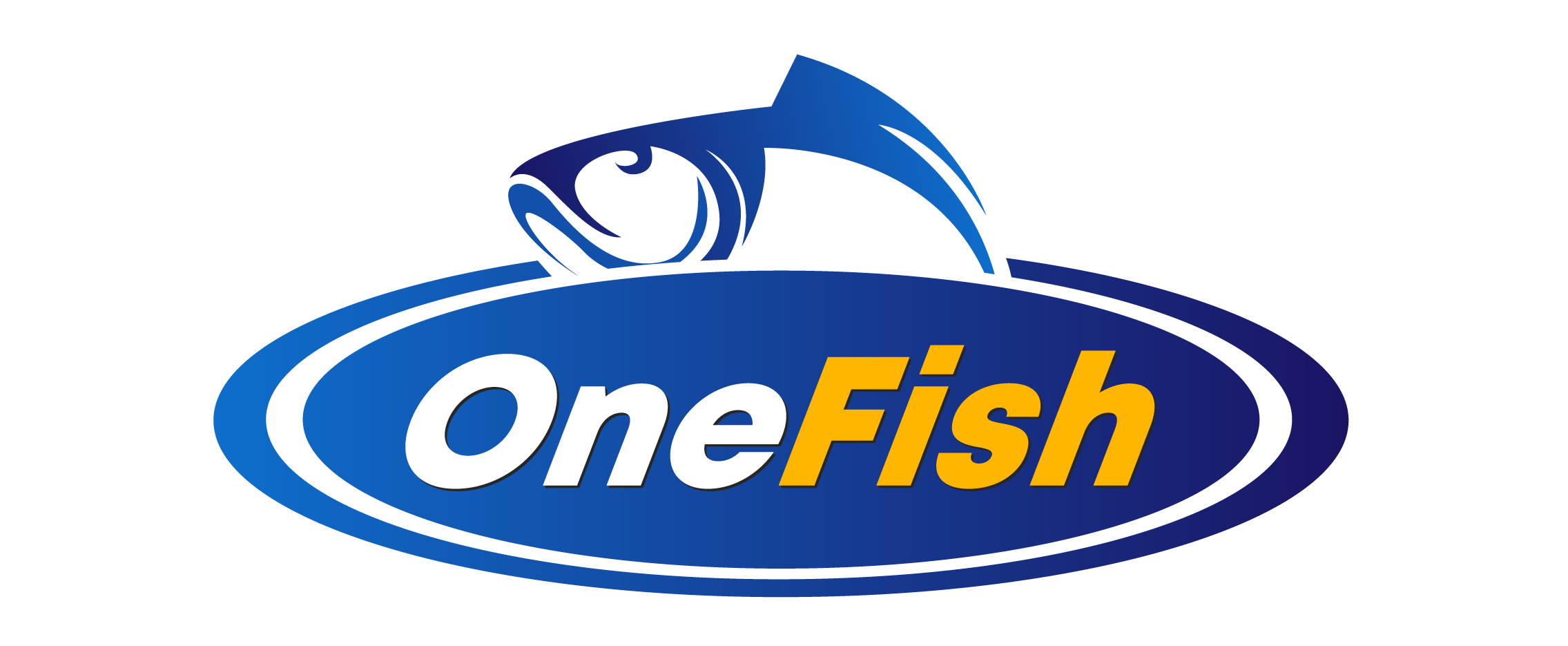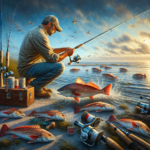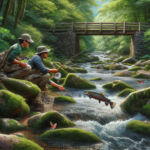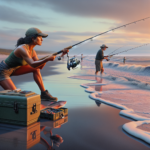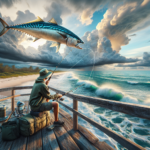Trolling for Salmon in Alaska’s Coastal Waters
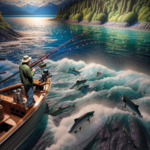
Introduction
Imagine the thrill of reeling in a massive Chinook salmon against the backdrop of Alaska’s stunning coastal waters. Did you know that Alaska accounts for nearly 90% of the wild salmon harvested in the United States? This article delves into the art of trolling for salmon in Alaska’s coastal waters, covering everything from the best fishing techniques and gear to the top fishing spots and seasonal considerations.
Whether you’re a seasoned angler or a novice looking to experience the adventure of salmon fishing, this guide will provide you with all the information you need to make your trip a success. Understanding the nuances of trolling for salmon in Alaska is not just about catching fish; it’s about appreciating the rich history, diverse ecosystems, and the thrill of the chase.
Background/Context
Historical or Cultural Significance
Salmon fishing has been a cornerstone of Alaskan culture for centuries. Indigenous communities have relied on salmon as a primary food source, and the fish holds significant cultural and spiritual value. The commercial salmon fishing industry began in the late 19th century, and today, it remains a vital part of Alaska’s economy and heritage.
Geographical Overview
Alaska’s coastal waters are a prime habitat for various salmon species, thanks to the state’s unique geography and climate. The region features a mix of fjords, bays, and estuaries, providing ideal conditions for salmon to thrive. The cold, nutrient-rich waters support a diverse ecosystem, making it a haven for both fish and anglers.
Key Points/Details
Fishing Techniques
Technique Overview
Trolling is the most effective technique for catching salmon in Alaska’s coastal waters. This method involves dragging baited lines or lures behind a moving boat, covering a wide area to locate schools of fish. Downriggers are often used to control the depth of the bait, ensuring it stays in the optimal strike zone.
When and Where to Use
Trolling is particularly effective in deeper waters and during the salmon’s migratory periods. The best times to troll are early morning and late evening when salmon are most active. Key locations include the Inside Passage, Prince William Sound, and the waters around Kodiak Island.
Recommended Gear
- Rods: Medium to heavy-action trolling rods, typically 8-10 feet long.
- Reels: High-capacity, level-wind reels with a strong drag system.
- Lines: 30-50 lb test monofilament or braided lines.
- Lures/Bait: Herring, spoons, and hoochies are popular choices.
- Downriggers: Essential for controlling bait depth.
Species Information
Species Overview
Alaska’s coastal waters are home to five species of Pacific salmon: Chinook (King), Coho (Silver), Sockeye (Red), Pink (Humpy), and Chum (Dog). Each species has unique habits and preferred habitats, making them exciting targets for anglers.
Best Practices
To successfully catch salmon, it’s crucial to match your techniques and gear to the specific species. For example, Chinook salmon prefer deeper waters and larger baits, while Coho salmon are more aggressive and can be caught using faster trolling speeds and flashier lures. Timing is also essential; each species has peak seasons that vary by location.
Location Information
Top Fishing Spots
- Inside Passage: Known for its sheltered waters and abundant salmon runs.
- Prince William Sound: Offers diverse fishing opportunities and stunning scenery.
- Kodiak Island: Famous for its large Chinook and Coho salmon.
- Southeast Alaska: Home to numerous bays and inlets teeming with salmon.
Regulations and Licenses
Fishing regulations in Alaska are strictly enforced to ensure sustainable practices. Anglers must obtain a valid fishing license and adhere to specific catch limits and seasonal restrictions. It’s essential to check the latest regulations from the Alaska Department of Fish and Game before heading out.
Seasonal Considerations
Seasonal Variations
Fishing conditions in Alaska vary significantly throughout the year. Spring and summer are the prime seasons for salmon fishing, with different species peaking at various times. For example, Chinook salmon runs are typically strongest from May to July, while Coho salmon are most abundant from July to September.
Best Times to Fish
The best times to fish are early morning and late evening when salmon are most active. Tides also play a crucial role; fishing during incoming or outgoing tides can increase your chances of success.
Events and Tournaments
Event Overview
Alaska hosts several fishing tournaments and events throughout the year, attracting anglers from around the world. Notable events include the Golden North Salmon Derby in Juneau and the Seward Silver Salmon Derby.
Preparation Tips
To prepare for a fishing tournament, ensure your gear is in top condition and practice your trolling techniques. Study the specific rules and regulations of the event, and consider pre-fishing the area to familiarize yourself with the waters.
Tips and Best Practices
General Tips
- Always check the weather forecast before heading out.
- Use a fish finder to locate schools of salmon.
- Vary your trolling speed and depth to find what works best.
- Keep your hooks sharp and check your lines regularly for wear.
Avoid Common Mistakes
- Not adjusting your trolling depth: Salmon often swim at different depths depending on the time of day and water temperature.
- Using the wrong bait: Match your bait to the specific species you’re targeting.
- Ignoring local regulations: Always stay updated on the latest fishing regulations to avoid fines and contribute to conservation efforts.
Advanced Techniques
- Use a flasher or dodger to attract salmon to your bait.
- Experiment with different trolling patterns, such as zig-zagging or making S-turns.
- Incorporate scent attractants to make your bait more enticing.
Gear and Equipment Recommendations
Essential Gear
- Trolling rods and reels
- Downriggers
- High-quality lines and leaders
- Variety of lures and baits
- Fish finder
Optional Gear/Upgrades
- Electric downriggers for easier depth control
- GPS and mapping software for navigation
- Rod holders for hands-free trolling
- Weather-resistant clothing and gear
Where to Buy or Rent
Local tackle shops in Alaska offer a wide range of fishing gear and equipment. Some popular options include:
- Sportsman’s Warehouse
- Cabela’s
- Alaska Rod Co.
Many shops also offer rental options for larger equipment like downriggers and fish finders.
Safety and Conservation
Safety Tips
- Always wear a life jacket when on the water.
- Be aware of weather conditions and avoid fishing during storms.
- Carry a first aid kit and emergency supplies.
- Inform someone of your fishing plans and expected return time.
Conservation Practices
- Practice catch and release to help maintain fish populations.
- Follow all local fishing regulations and catch limits.
- Dispose of fishing line and other waste properly to protect the environment.
- Respect wildlife and their habitats.
Planning Your Trip
Accommodations
Alaska offers a range of accommodations to suit all budgets, from rustic cabins and lodges to luxury resorts. Popular options near prime fishing spots include:
- Waterfall Resort Alaska
- Kenai River Lodge
- Kodiak Island Resort
Travel Tips
When planning your trip, consider flying into major hubs like Anchorage or Juneau and then taking regional flights or ferries to your final destination. Renting a car can provide flexibility for exploring different fishing spots.
Additional Activities
Alaska offers a wealth of activities beyond fishing, including hiking, wildlife viewing, and exploring national parks. Consider adding a glacier tour or a visit to a local cultural center to enrich your trip.
Frequently Asked Questions (FAQs)
What is the best time of year to troll for salmon in Alaska?
The best time to troll for salmon varies by species, but generally, the peak season runs from May to September.
Do I need a special license to fish for salmon in Alaska?
Yes, you need a valid Alaska fishing license, and additional stamps may be required for certain species like King salmon.
Can I rent fishing gear in Alaska?
Yes, many local tackle shops offer rental options for fishing gear, including rods, reels, and downriggers.
What are the most common mistakes to avoid when trolling for salmon?
Common mistakes include not adjusting trolling depth, using the wrong bait, and ignoring local fishing regulations.
Conclusion
Trolling for salmon in Alaska’s coastal waters offers an unparalleled fishing experience, combining the thrill of the catch with the beauty of the Alaskan wilderness. By understanding the best techniques, gear, and locations, you can maximize your chances of success and create lasting memories. Whether you’re preparing for a tournament or planning a leisurely fishing trip, this guide provides all the information you need to make the most of your Alaskan adventure.
So grab your gear, head to the stunning coastal waters of Alaska, and experience the excitement of trolling for salmon. Happy fishing!
